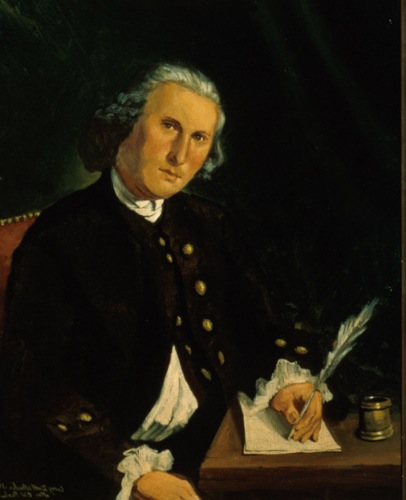By Michael Gentithes, Visiting Assistant Professor, Chicago-Kent College of Law.
The smartphones we carry in our pockets radically simplify our lives, reducing hour-long tasks to seconds and eliminating the need to separately carry a camera, map, book, and audio player. But should they also enable the government to access months of records of everywhere someone went while carrying a phone?
The Supreme Court recently considered that question when it heard oral arguments in the much-anticipated case of Carpenter v. United States. Specifically at issue was the government’s warrantless collection, for 127 days, of a robbery suspect’s “cell site location information”—data showing which cell phone tower the suspect’s phone accessed at particular times, and hence roughly where the suspect was. A bigger principle was also at issue: the claim that when we reveal information about ourselves to third party service providers, we relinquish any expectation that the information is private and will not be accessible to government investigators. That principle, known as the “third-party doctrine,” previously led the Court to permit the warrantless collection of the numbers we dial in our phones (Smith v. Maryland (1979)) and the financial information we disclose to a bank (United States v. Miller (1976)). The question Carpenter asks is whether that doctrine extends to the networked world, and to the government’s collection of data we routinely reveal to technological third parties about our location, shopping preferences, reading habits, and more.
That question matters. Though some might be untroubled by massive data dragnets because they feel they have nothing to hide, concerns about the information we reveal to third parties today extends to more than just embarrassing facts. The complete details of our daily thoughts and actions might be accessible to any government agent willing to look. By creating additional copies of that information, the government generates added opportunities for hackers—or internal whistleblowers—to access and publicize it. That possibility should startle the guilty and innocent alike.
During the Carpenter oral arguments, many of the Justices appeared sympathetic to such privacy concerns. But they failed to coalesce around a guiding principle. Though they acknowledged the limitations of third-party doctrine—which does not extend to medical information provided to one’s doctor, for instance, or the words a suspect says on the phone after dialing a number—they struggled to explain why that data receives Fourth Amendment protection while dialed phone numbers and financial records do not. And without such an articulable guiding principle, it seems arbitrary to place location data derived from cell phone towers in either the protected or unprotected category.
Squaring that circle is a difficult challenge the Justices should not sidestep. Fourth Amendment jurisprudence has been ridiculed as little more than nine people’s rudderless assumptions about the privacy citizens actually and appropriately expect. The Justices should state a principled basis upon which to classify location information—and the slew of other data points modern citizens reveal to third parties—as protected or unprotected. Doing so will require the Justices to acknowledge that informational privacy is a messy, non-binary continuum. Most data points fall somewhere between the wholly private contents of a conversation and the entirely unprotected numbers dialed to arrange it. Data points about our locations in public are one example. Though largely unprotected, locational data conveys some minimal amount of meaning, such that even if a citizen does not harbor a great enough expectation of privacy in each individual data point to render collection of that datum a search, she might have a great enough expectation of privacy in months of aggregated locational data to trigger the Fourth Amendment.
Enunciating such a rule may require reconsideration of previous holdings, especially those claiming that sensitive financial information disclosed to a bank is wholly unprotected. It might also require the Justices to acknowledge that Fourth Amendment jurisprudence is necessarily tentative, and that just as those holdings need revision, their holding in Carpenter may be reconsidered when new technology, and new cases, emerge. But such an acknowledgement simply makes explicit what was already inherent in the common-law-style decisions applying the Fourth Amendment to the modern world. And a genuine effort to craft such a tentative rule will both enhance the public’s security and its regard for the Court.


